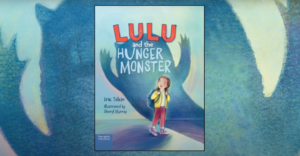For donors and volunteers, the charitable food system offers a multitude of ways to help out in the community. More people donate to food drives every year than watch the Super Bowl, while wide swaths of the population volunteer at the estimated 60,000 food pantries and programs across the country and nearly 400 larger-scale food banks and food rescuers.
The focus of all this activity, meanwhile, are the millions of people who are food insecure — an estimated 54 million as a result of the pandemic, according to Feeding America. Nearly two-thirds of these food-insecure households were regular visitors to food pantries before the pandemic, routinely using them to make their monthly household budgets work.
The charitable food system, in other words, is a critical component of our overall food system, connecting millions of people to food, while also acting as an important entry point to charitable activity for millions more. Yet very little rigorous or scholarly attention has ever been paid to it.

Now we have Katie S. Martin to thank for changing that. Armed with a PhD in nutrition science and policy, but skilled with a conversational and welcoming tone, Martin has authored a book that is likely food banking’s most comprehensive guide to understanding our country’s current food-assistance efforts and how they could be improved. Her approach may be easygoing and understated, but the overall objective is bold: to reinvent the way America provides charitable food.
Martin is well-positioned to take on such a lofty goal. Following 20 years of developing and evaluating creative solutions to hunger, she currently serves as the Executive Director of the Institute for Hunger Research & Solutions at Foodshare, a Conn.-based food bank, where she practices much of what she preaches, and advises other food banks and pantries on how to do the same. (Full disclosure: Martin is also an Editorial Advisory Board member of Food Bank News.)
Martin’s book, Reinventing Food Banks and Pantries, combines a sophisticated multi-layered analysis of the history and forces shaping food assistance, with practical hints on how to improve current practices and outcomes. The various chapters capture many of the larger themes the hunger relief world is grappling with — dignity, equity, metrics and structural inequality — but couches all these weighty topics in easily digestible language and formats. Each chapter, for example, ends with a series of easily fulfilled action steps, as well as links to the resources mentioned in the preceding pages. Think of it as a menu, Martin says: “You can start small and take one bite.”
Despite her focus on small steps, Martin in no way downplays the enormity of the problem. Food insecurity has persisted despite the evolution of food banking over the past 50 years, pointing to more difficult underlying issues beyond the need to provide food, such as injustice, poverty and a wanting social safety net. These may not be the problems food banks signed up to solve, but they remain the challenges that must be overcome — and Martin is not about to let anyone off the hook about it. “We can do better,” she says, more than a few times throughout the book.
One area in which Martin is adamant about seeing change is a shift toward offering pantry guests the ability to choose their own food. She acknowledges that this concept of client choice may seem trivial. “Why am I making such a big deal about how food is distributed?” she asks. In fact, it is important, and Martin has already laid the groundwork for understanding why in the preceding chapter where she talks about the need to build a welcoming culture in the pantry and the importance of emphasizing relationships over efficiency.
Despite being acknowledged as a best practice, client choice is far from standard. Martin cites one study in which only 19% of 350 pantries offered it. Yet the dignity of being able to choose and the trust it confers is fundamental to moving clients onto better pathways in life. How can we expect anything of people if we don’t trust them to choose their own food? Martin asks.
She has heard all of the reasons about why moving to client choice is hard, but she knows you can do it anyway. “Here’s the thing,” she writes. “One hundred percent of the time people say it has worked well. One hundred percent of the time. I’m not kidding.”
Client choice is far from the only thoroughly examined topic. The book offers a deep dive into all the vectors shaping charitable food, including its interconnectedness with racial inequality, the power dynamics that sometimes emerge in a volunteer corps, the impact of choosing one method of evaluation over another, and the link between food insecurity and chronic disease.
The book educates as it inspires. Under Martin’s guidance, the big-picture issues facing the charitable food system start to relate to the everyday decisions being made by frontline workers and volunteers. Along the way there will be gentle encouragement and easily managed directives. As Martin might put it: all you’ll have to do is take one step.
Reinventing Food Banks and Pantries is available now and can be ordered here.
Like what you’re reading?
Support Food Bank NewsConnect with Us:








